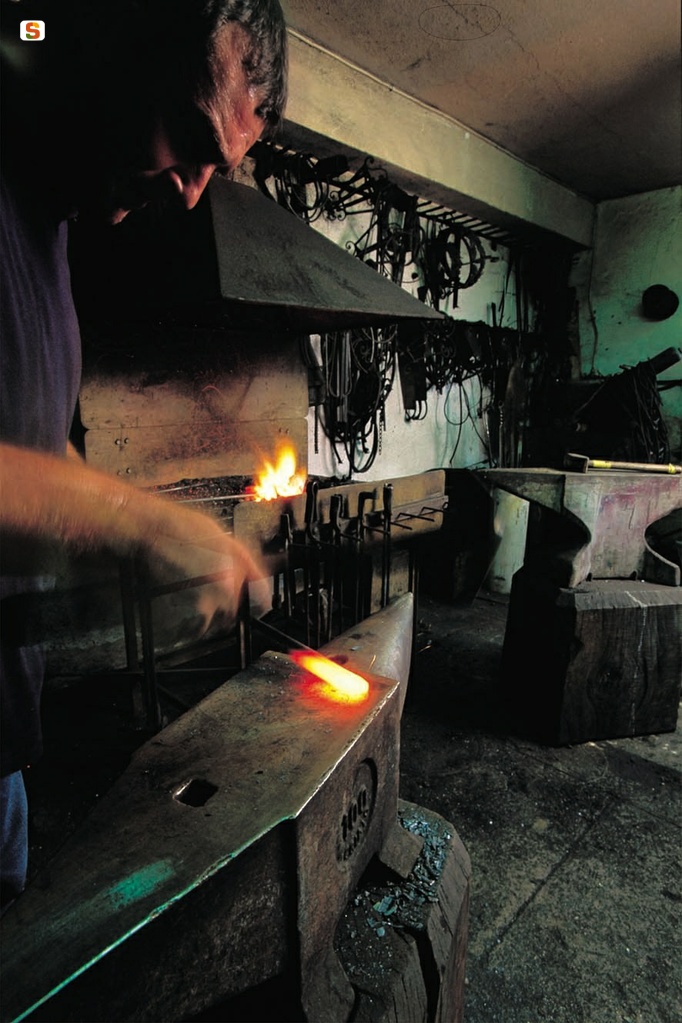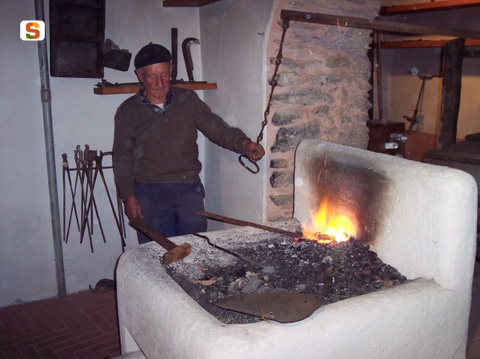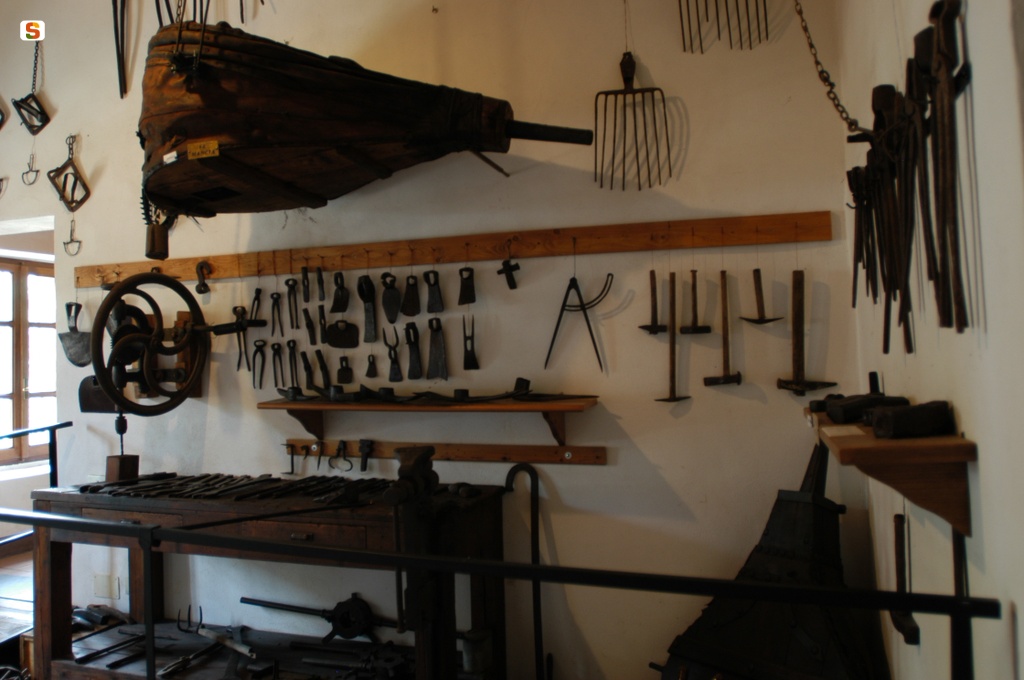


The traditional forge consisted of a raised cooktop generally embedded in a brick structure. In order to harness smoke, the top was equipped with a chimney that also served as the light screen so as to provide the right level of shade necessary to the blacksmith to detect the chromatic variations of red-hot iron during the processing stages. Bellows, fodde or mancia were usually installed next to the forge, blowing air through a mechanical movement, useful to keep the combustion of coal alive. In traditional workshops, bellows were made of wood and leather and had a variable size of about one meter by one meter and a half. It could be installed hanging from the ceiling or sideways on a wooden support. It was operated manually by a system of chains.
A critical tool to shape red-hot metal is the anvil, s’incodini or s'incudini, consisting of a block of steel or cast iron, placed on a sturdy wooden stump, and of a square central part and two side elements, the horns, one conical and one squared. The blacksmith hammered the metal on the anvil with hammers, su marteddu, of different weights and shapes and with the aid of a second beater who used a mallet or a mace, su mallu, a heavy two-handed hammer. Depending on the size of the piece to hammer, more than one beater could be involved.
Tools also included a variety of tongs, tanallas, of different shapes, often crafted by the very same blacksmith, as well as different types of hand drills.
Another basic piece of equipment in the blacksmith's shop was the workbench, su bancu, equipped with vice jaws to keep the piece of metal still during filing, sawing, drilling, etc.
As for finishes and decorations, the blacksmith had a wide range of files and chisels, small and big saws, punches, compasses, templates and molds.
In the best equipped workshops, sandstone grinding wheels could be found, s'arroda per accutzai, along with a bending roll, a rotating cylinder machinery used to bend metal rods to be applied to wagon wheels.

